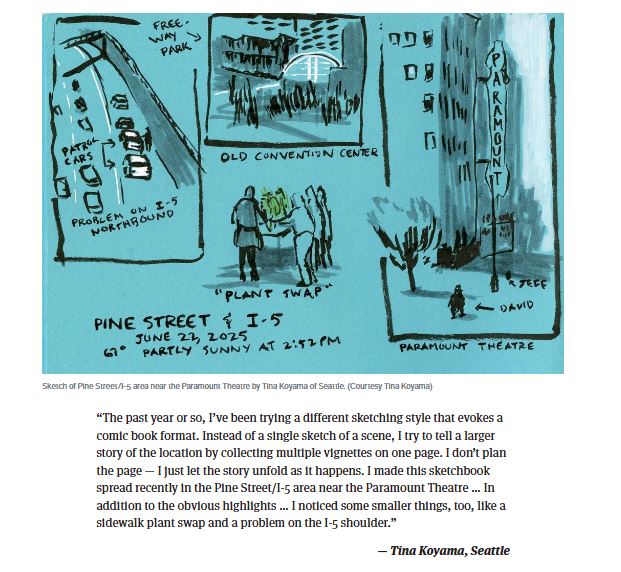 |
| 7/25/25 FOB Poke Bar and some light rail sketches |
I love poke, especially when served in the “build your own bowl” style: You get to pick all the proteins, sides and toppings, usually for one price. Just Poke is my favorite local chain, and I knew one was nearby when I was on Capitol Hill around lunch time the other day, but I wanted to check out a different place that was new to me.
When I was in middle school in the early ‘70s, FOB (“fresh off the boat”) was a derogatory term we used to refer to the mostly Chinese immigrant students at our school. I guess it’s not derogatory anymore, as it is the name of this small poke chain. FOB Poke Bar is distinctive in that it offers quite a few interesting toppings and extras that I don’t typically see elsewhere, like takuan (sweet pickled radish, which I love), tamago (egg cakes) and a delicious cilantro aioli that I wish they sold in a bottle so that I could pour it on salads.
As you can see from my notes, I wasn’t enamored with the ambiance inside (and other patrons must agree, as I was the only one dining there the whole time), so it’s better for takeout. But I certainly devoured that bowl easily, so I have no complaints about the food.












































